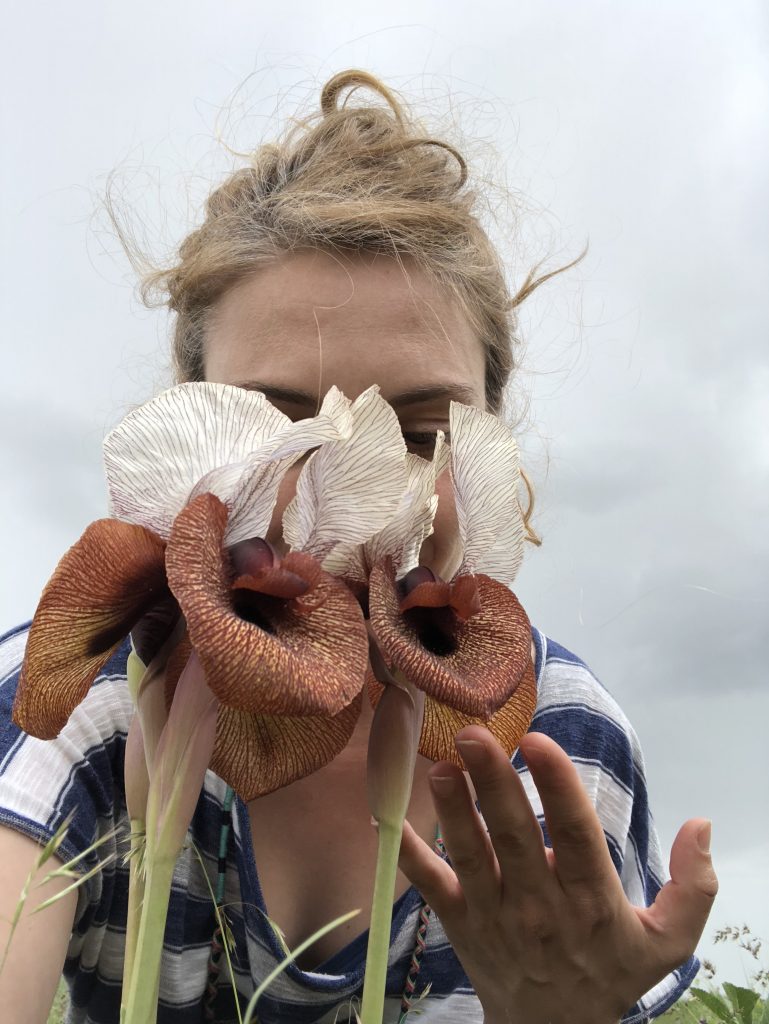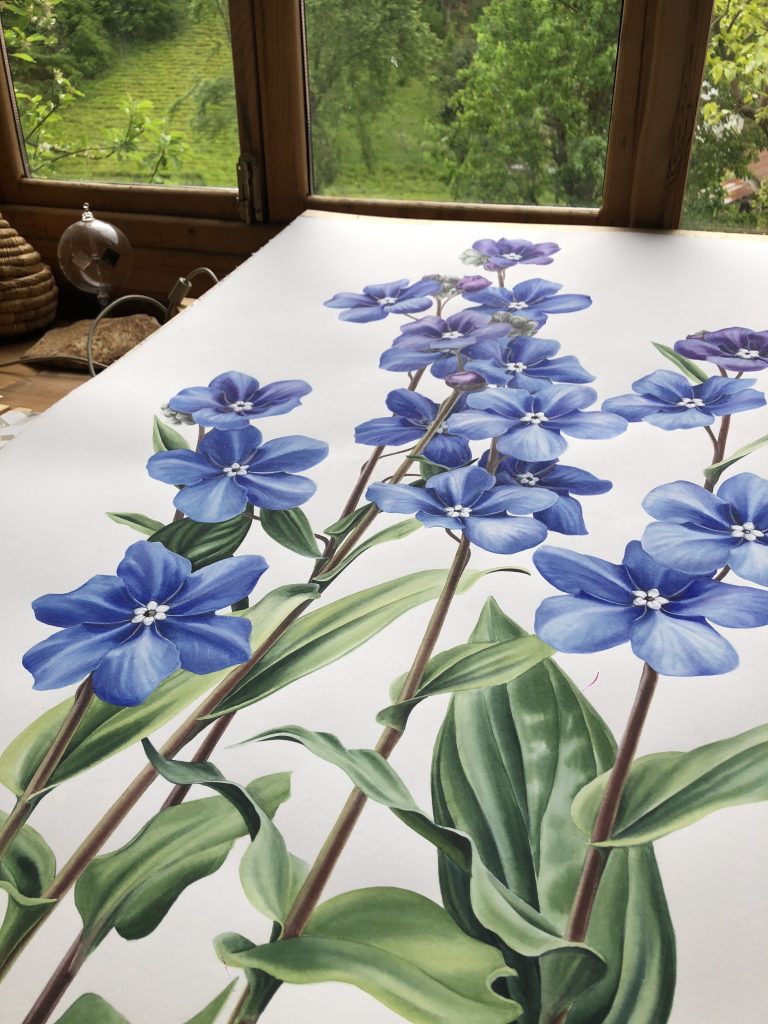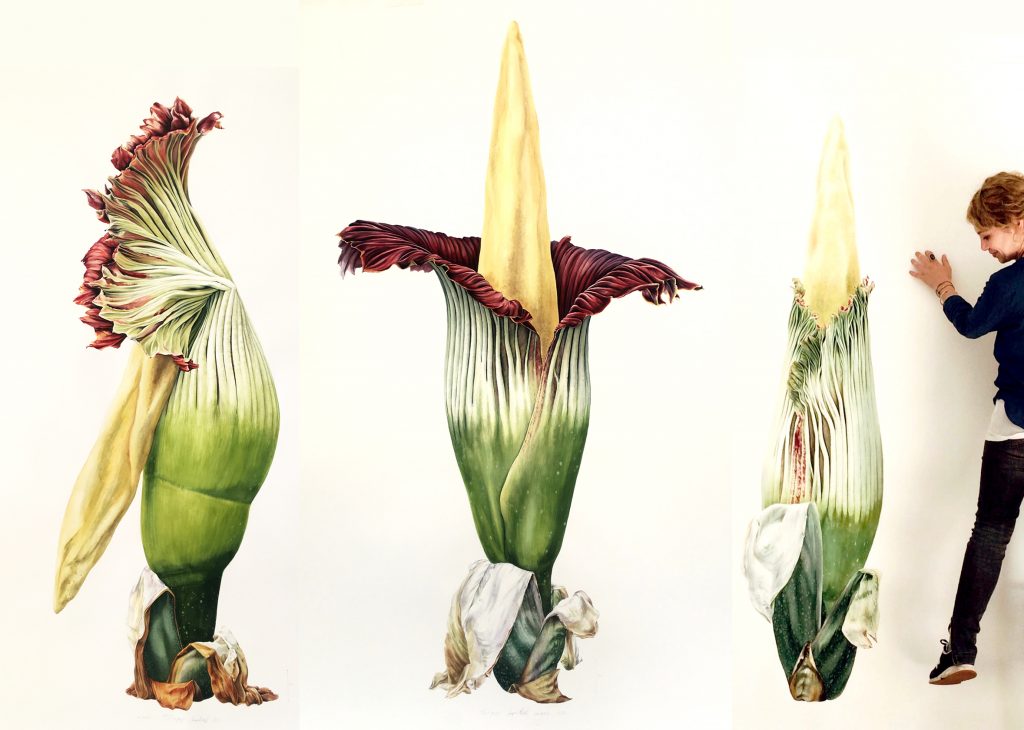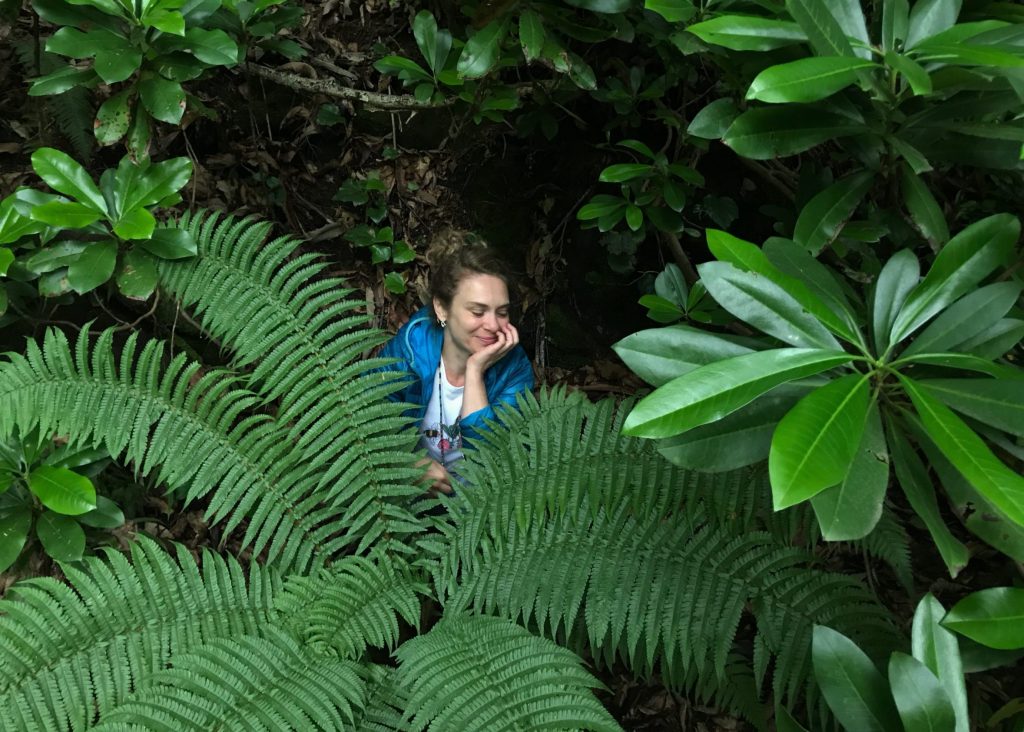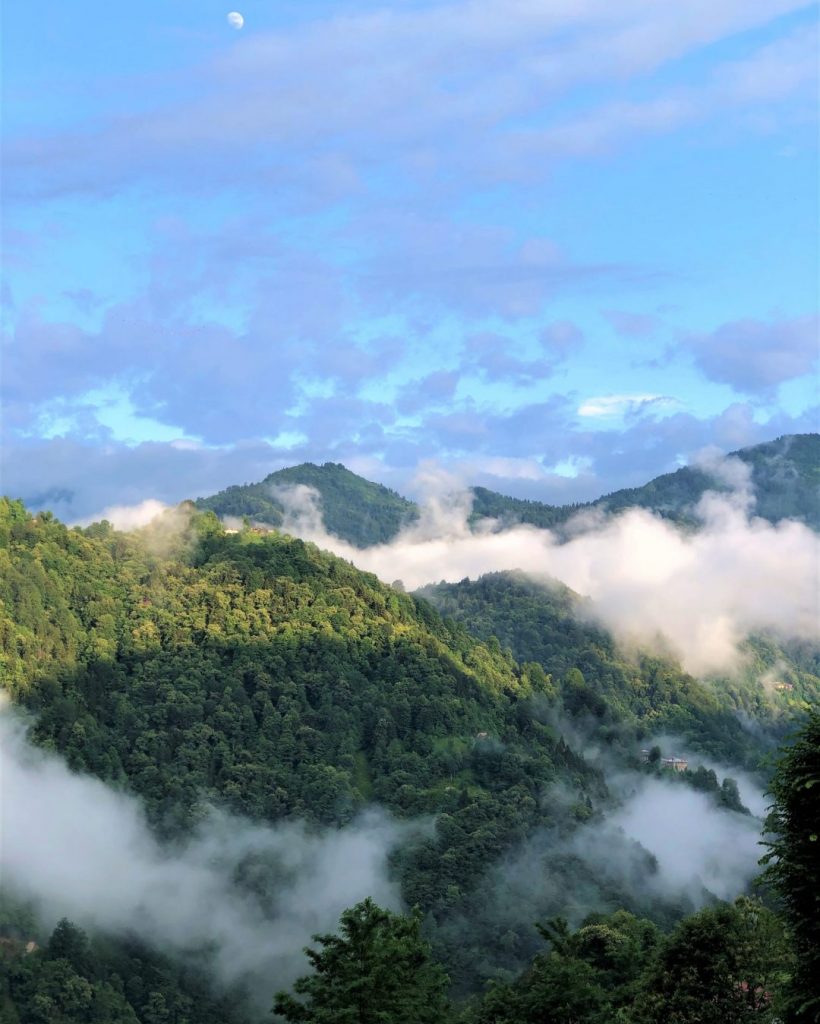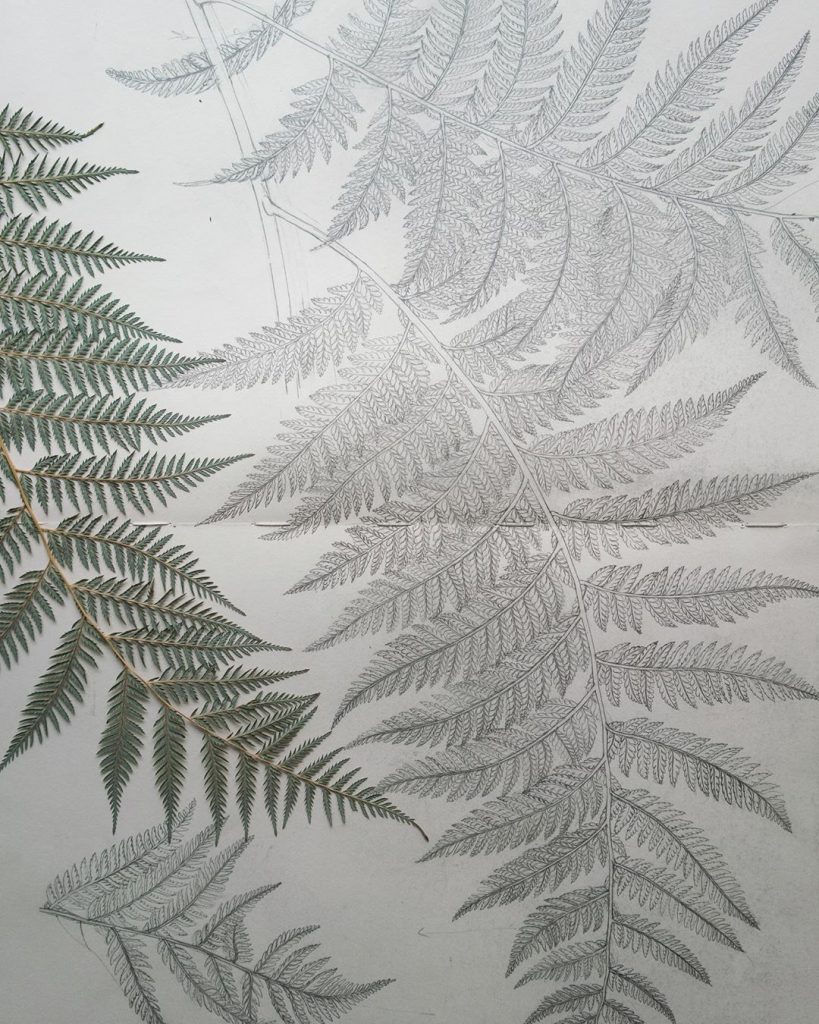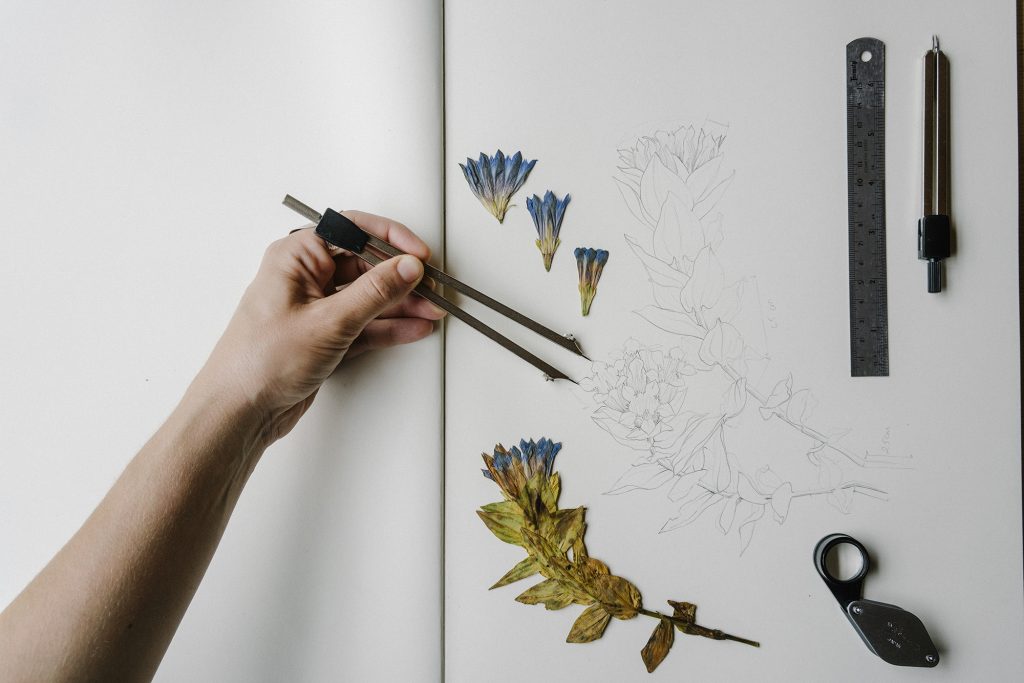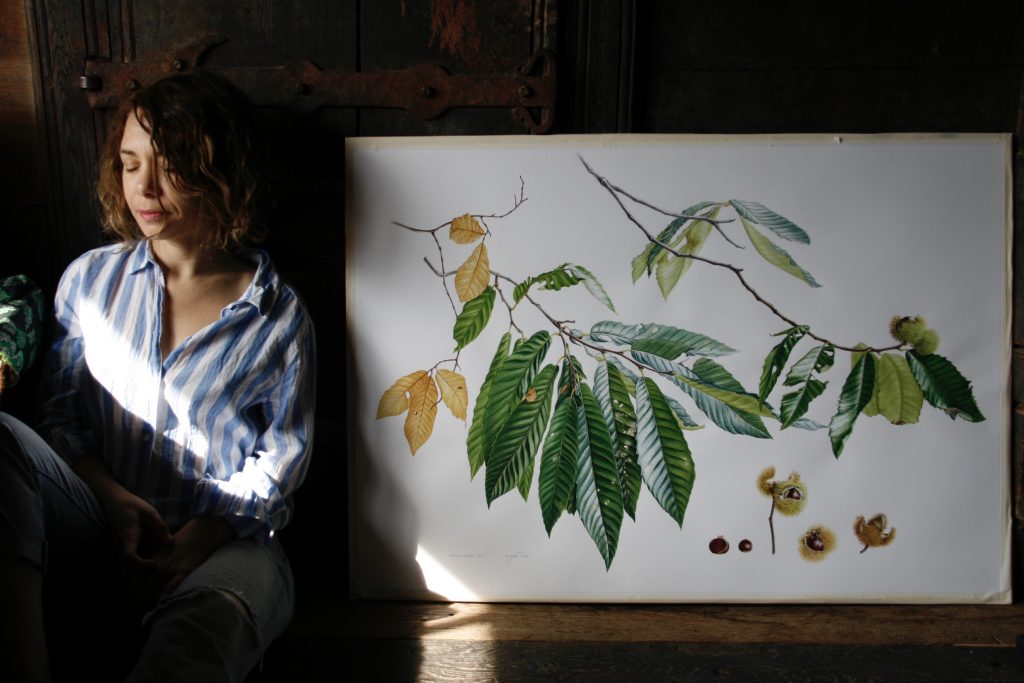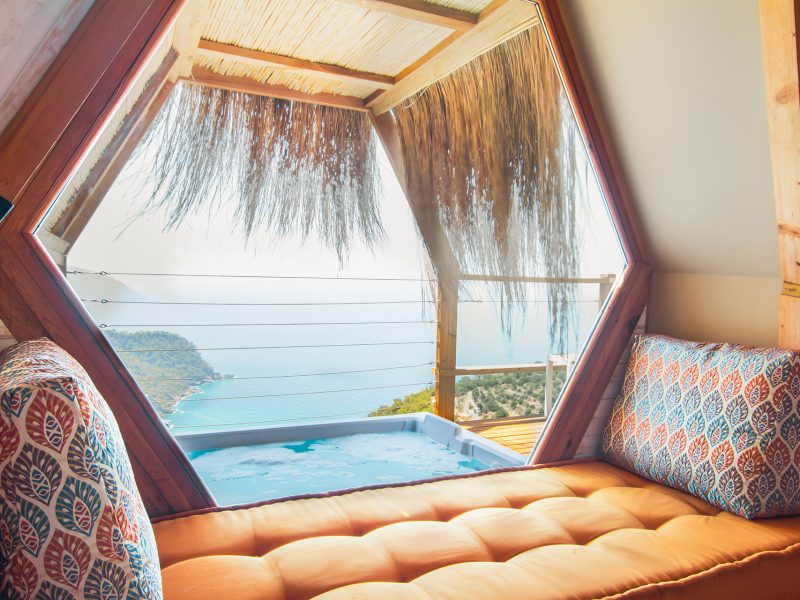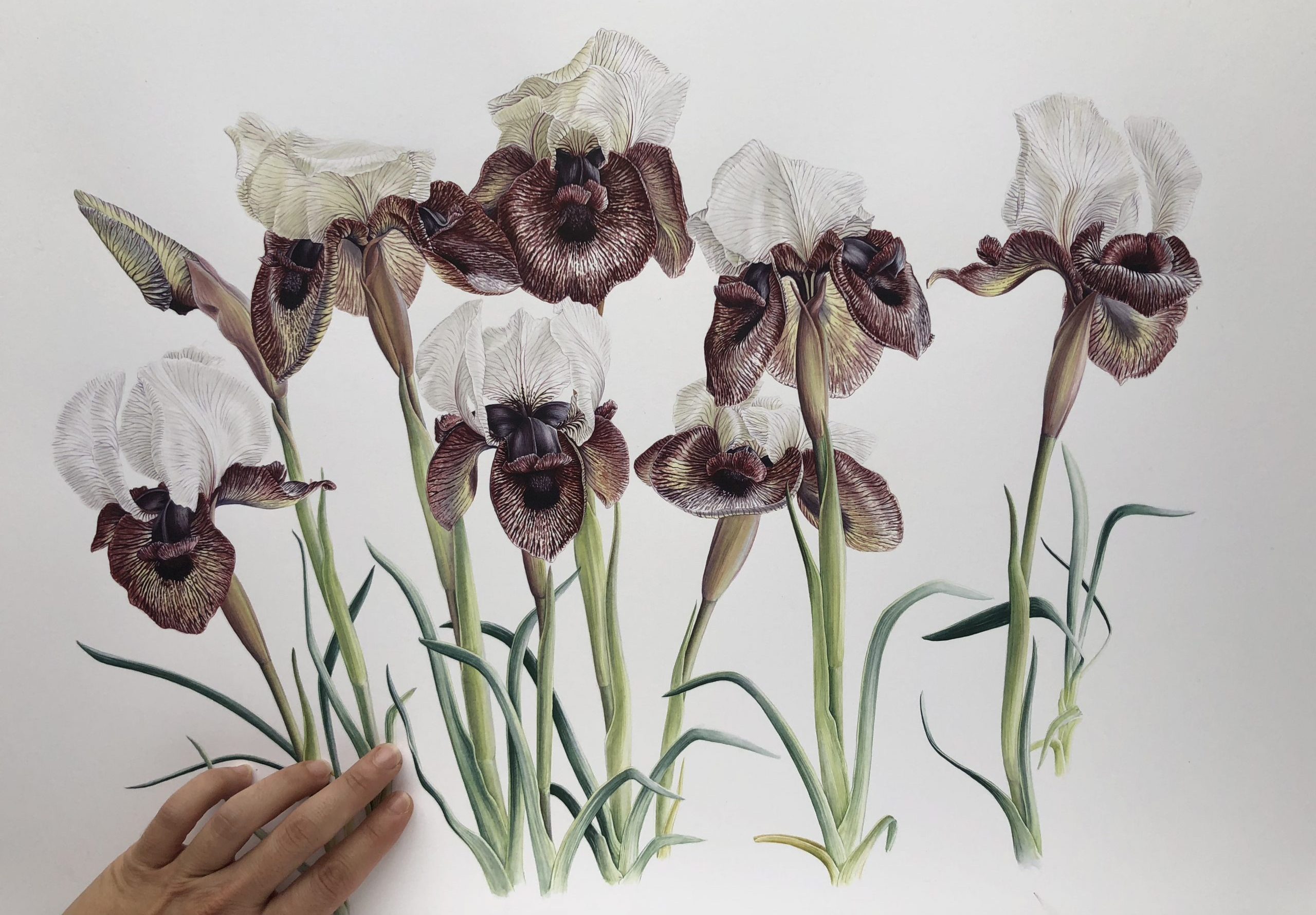
Botanical Illustrator Işık Güner
Examining a plant for eight to ten hours, admiring its details and scientifically portraying it with all the life phases from blooming to withering requires patience and a sense of wonder that only children could have. Işık Güner, a hyperactive botanic illustrator who divides her time among Turkey, Scotland and the field trips all around the world, reports from the mountain village where she lives.
“Plant illustration is a purely observational work. Painting from a photograph is not suitable for scientific botanical illustration. You must observe the plant for hours.”
What led you to become a botanical illustrator?
I have studied environmental engineering, and took this path quite unexpectedly. I was on an unrelated path and I suddenly changed track. Incidentally, perhaps. I did not have a clear decision to be a botanical illustrator. I was in my 20s after all! ANG Foundation, the owner of Nezahat Gökyiğit Botanical Garden in Istanbul, invited Christabel King, an illustrator from Kew Gardens to the Bosphorus University back then. I attended this one-week-course and enjoyed it very much. I had been interested in painting ever since my childhood.
Botanical illustration is a little bit of therapy, or quite a “Zen” activity, I presume…
It can be so, or vice versa. It calms my mind, but sometimes you encounter such challenging conditions… When drawing plants, a live sample is essential. You take the plant, sit at your table and try to paint, and sometimes the plant starts to fade in just half an hour. You try to transfer it to paper in a very short time! These moments can be a bit stressful. As soon as you lose the plant, you may not have the chance to see it again -especially if you have been on fieldwork and picked it up from the mountains.
It can also be a rare species…
We do not usually take rare species out of the soil. But such endangered plants can be seen in botanical gardens, where they are protected. Then we go to work in those botanical gardens. Working on the field is not easy. Sometimes you need to lie down, sometimes you have to cope with the sun, wind, and rain! If you want to make a scientific botanical illustration by measuring the plant in detail, the best way is to bring the plant to a studio environment and work on a table.
BOTANICAL GARDENS
You have been working as a botanical artist at Royal Botanic Garden Edinburgh for many years. What kind of place is it?
It is a wonderful place. I think I have been working there since 2007. We carried out a project, and then I started to work there as a trainer in botanical illustration courses. They say that it is not that big compared to other botanic gardens, but it is full of species. Botanic gardens in England work with the flora of the whole world. So, you can even see plants from China or Turkey there… They have resources, and a very capable team of experts and gardeners working there.
In one of your paintings, a giant flower called Titan arum caught my attention…
It is the largest flower in the world. It is also called the “corpse plant” due to its terrible smell! It bloomed for the first time in Royal Botanic Garden Edinburgh in 2016, after twenty years. It was an incredibly great event. The whole city of Edinburgh rushed to the botanic garden. There were queues for meters. It is a plant from the Indonesian island of Sumatra. Its height was 2 meters 58 cm. We painted three different phases of the flower as a team of three botanical artists. First, while it’s blooming, and secondly in full bloom. On the third day, it bends his head and begins to die. We also illustrated that phase. The original pictures are hung at the entrance of the Science Building in the Royal Botanic Garden Edinburgh.
To which corners of the world your curiosity for plants has dragged you?
I got the chance to travel a lot thanks to this profession. After I started working in the Royal Botanic Garden Edinburgh, I found myself in a big project on the Chilean flora, for a book titled Plants from the Woods and Forests of Chile. The project had been planned to last for four years, but it took eight years. As three illustrators, we were able to paint a total of 80 species in the course of eight years. It was a very laborious and slow task, as we had to illustrate all the life stages of plants and we needed to work with live samples. We could find some of them in Royal Botanic Garden Edinburgh, but we had to go to Chile for others. We made sketches, then six months later the fruits came! I was practically organizing all my life according to the flowering periods of the plants. During the project, I lived in between Turkey, Scotland, Chile and Spain. Apart from that, I also took part in some projects in Nepal and China.
ILLUSTRATED FLORA OF TURKEY
Now you are part of a team working on an ambitious project to illustrate the flora of Turkey. How is it going?
This is a very large project indeed, where the botanists in Turkey were brought together by ANG Foundation. Quite a number of botanical artists have been trained in Turkey, since the first formal botanical illustration courses were held at Nezahat Gökyiğit Botanic Garden in 2002. This newfound enthusiasm in botanical art encouraged the botanists to document the flora of Turkey in an illustrated format. Botanists in Turkey have already been doing valuable work for years. We, the illustrators, were weaker beforehand. Indeed, we were absent!
Apparently, the conditions have now matured for such a project…
Yes… Naturally, this is a complicated project, as Turkey has a very rich flora. There are about 10,000-11,000 plant species, of which 3000-4000 are endemic, meaning that they are only found in Turkey.
There is a very interesting claim at the intro of the book: It is told that the flora of Turkey exhibits the wealth of a continent, rather than a country.
That’s true! There is amazing biodiversity in this country that could even compete with the variety of total flora in the European continent. I have been to the remotest corners of the world to paint rare plants, but nowhere is like Turkey! With this project, we aimed to illustrate all of this variety.
All of them? How much time would it take?
Years and years… Let me explain it this way: I work as an art director at this project. We were two art directors. Now, we are trying to train the third one, as the project might last for decades. I may not be here as an art director forever? We say to our apprentice this: “Soon, you will need to teach what you have learned to someone else.” We are talking about 30 volumes here! The second volume has been printed, and we are currently working on the third one. This project stands alone in the world. An illustrated flora of the country has been written before, but never with the claim to paint them all! Let’s see what will happen…
Last fall, you released a book called Botanical Illustration from Life. It was published in English, French and Spanish. Who would benefit from this book?
This is an educational book. In fact, there are many educational books in this field. There is a pile of very good botanical illustrators, who generously share what they know. When I got this offer to publish a book, I decided to write about a methodology. In other words, I described the way I am following. I have divided my whole process of a painting from beginning to end into separate chapters. When I illustrate a plant, I first mention its previous drawings, if there are any. Then comes the stage of observation. Plant illustration is a purely observational work. Painting from a photograph is not suitable for scientific botanical illustration. You must observe the plant for hours. When I start working in the morning, my eyes are usually fixed on the plant, rather than the paper. I watch the plant for up to eight, nine, ten hours until the evening. A great way to learn! You start seeing very strange details then. It can take days, or months to complete an illustration.
What species amaze you most?
Turkey is very rich in terms of bulbous plants, from the east to the west. When I first started this profession, I had a lot of chances to paint bulbous plants: crocuses, irises, navruzes, tulips, inverted tulips… I love each and every one of them.
BOTANICAL FIELD TRIPS AROUND THE WORLD
You also organize educational trips to various parts of the world from Morocco and Mexico, recently to the Saxon region of Transylvania. What awaits the participants on these trips?
It changes according to the location and local vegetation. At times, we go up and down the mountain slopes to see the plants in their natural habitat and at others, we do full-time workshops and I supply the plants. We made the Transylvania excursion last year for the first time. It was a course organized by an English family, settled in a tiny village of Transylvania years ago. They have a farm and are extremely interested in botanical illustration. We stroll in the fields with the participants and everyone gets the plant they want. Then we sit in a very pleasant workshop and illustrate it.
As far as I know, the Saxon region of Transylvania has the last untouched pastures of Europe, isn’t it?
There is serious protection. A project organized by the British inspired this course. Prince Charles has meadows there. He is also fond of botanical illustration and for that reason, we have prepared a book titled “Transylvania Florilegium” with his support. It’s a giant book. Painters from all over the world came and we have illustrated the flora of Transylvania at certain seasons.
Could we talk about your life in this village in Çamlıhemşin, your father’s hometown? What makes this place unique?
For me, the mountains. I live in the Black Sea region, the north-eastern part of Turkey. As soon as you get inside from the coast, you see the Kaçkar Mountains soar. This is a valley that stirs great feelings in me, as I used to spend a lot of time here during my childhood. It is known for the abundance of water. Here, water gushes everywhere! There were a few attempts to build an HEC (Hydro-Electric Central) here, but it did not come true. I hope we will not come across such things again, as water is precious.
And it will be even more precious in the future…
Destroying water resources means destroying vegetation and devastating the ecosystem. Not necessary at all! We will protect this place as much as we can. I’m looking out the window right now, and see all the shades of the green. Since we are at the beginning of spring, it is a phosphoric kind of green.
You can believe that you are in a rain forest!
In a rain forest, you would perhaps have various species of plants or animals that could kill you, but there are not so many poisonous species here. The climate is very akin to the rainforests though, as you said. We live cheek by cheek with wild animals like bears, jackals, wolves and wild boars. I am not a person who had the experience of living in a village before. Now I live in a tiny village with a few households. My father is from this village. My grandmother had a very old wooden house, and I have renovated it with little touches and set up my workshop here.
So you had already retreated from the world, before the world has retreated too…
There was no change in my life after the world was shut down. Still, I probably spend my longest time at home, due to the Coronavirus situation. I enjoy it a lot, as I can deal with the garden. I am a botanical illustrator, but I am a lousy gardener. But the st thing is, whatever you plant can grow here, thanks to the soil! It is very fertile, and water is abundant. Life is peaceful here…
To follow the artistic work of Işık Güner: www.isikguner.com
 English
English




